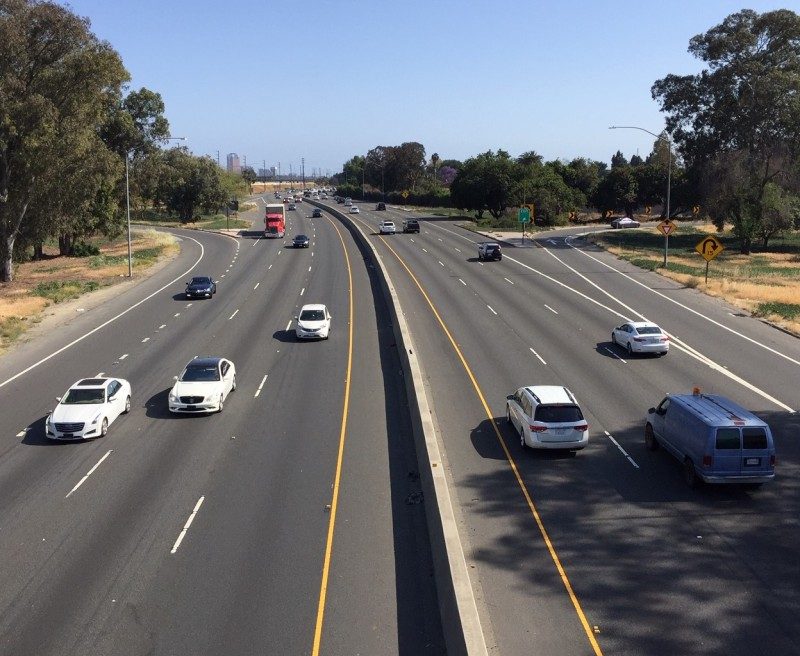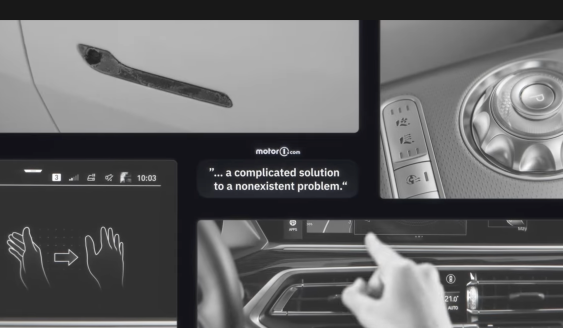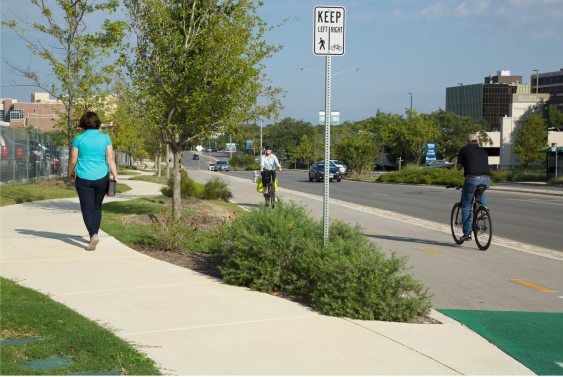Tomorrow, the Strategic Growth Council (SGC) will begin a conversation about how California transportation investments must change to meet new goals and answer needs that cannot be solved with more highway lane miles. The discussion launches from a report, called for by a 2019 law, A.B. 285 from Assemblymember Laura Friedman (D-Glendale), that analyzes the California Transportation Plan and related documents to see they are working towards or against better multimodal transportation options, greenhouse gas emission reductions, equity, and environmental justice.
The report, from a team of University of California researchers led by Professor Elizabeth Deakin, offers a blunt assessment of how California's historical focus on highway building has made us all car-dependent - and says that to meet climate goals the state will need to make major shifts, not just add a window dressing of active transportation and transit funding while continuing to build for cars.
Historically, California developed its transportation plans by assuming it needed to accommodate population growth which, it expected, would also bring growth in car travel.
"Economic development and the provision of fast, safe, and efficient transportation were the main policies driving transportation planning and investment in the United States from the earliest years of colonial settlement until quite recently. Building the system was the highest priority," writes the report.
As transportation networks became widely available, attention began to shift to operations and maintenance and to reducing the adverse impacts of transportation facilities and services. Today, while efficient project delivery remains important, new social and environmental goals have gained prominence.
Today, the road systems first envisioned nearly a century ago are largely built out, and attention has increasingly turned to providing more choices to travelers, including those who cannot drive a car, and in improving equity and the environment so that all can experience a high quality of life while maintaining and expanding prosperity and continuing to improve health and safety. With a mature and extensive network of highways in place, greater attention is being given to maintenance and rehabilitation and to managing and operating highways using new technologies and methods, including telecommunications, sensors, information technologies, automation, and control systems. Technological advances are already offering new services that blur the distinctions between public and private, transit and auto. Other transport modes are still developing, including micromobility options, on-demand services, driverless vehicles, and smart highways.
The recognition of global warming as a crisis with deadlines has been slow in coming, but is now a top priority for California. Likewise, past practices that have disproportionately harmed people of color and left out low-income individuals and households have finally been acknowledged. Acceptance of the need for policy change is leading to new efforts to remediate problems and deliver equitable programs and services. Transportation agencies continue to have important roles as designers and builders, but today attention also must be given to social and environmental considerations as well as transportation planning, management, and operations issues. Organizational change is needed to support this broader set of goals.
However, the report also notes that over time transportation planning and financing has become ever more complex, making changing those institutions even harder.
When the mission to build was dominant, the country’s engineering skills were tapped, and military organization and management models shaped the public and private organizations that built highways and railroads. Over time, additional institutions were established to handle problems in management. Regulatory agencies were formed to prevent private operator price gouging and other unfair practices. Commissions were established to oversee bureaucracies and infuse a business-like culture of cost management and efficiency into public transport projects. Metropolitan planning organizations were established to give urban areas greater say over the projects being built within their borders, and in nearly three-quarters of the states, ballot-box measures were introduced to allow the people to have a direct say in prioritizing investments. Highway departments became transportation departments when federal government grants began to flow for transit and intercity modes and political leaders clamored for a balanced transportation system. And lately, partnerships among transportation, housing, and environmental officials have been established to better coordinate development efforts and improve their performance.
The growing size and complexity also made responding to changes - in technology, policy, even in community values - slower. And in some cases organizations were "even openly resistant, clinging to preferences for building projects over managing systems and treating social equity and environmental mandates as constraints or secondary issues rather than as cause for redirection."
Therefore, "an explicit change strategy aimed not only at operational practices but also at the organization’s social and human resource elements is needed."And these changes must happen at multiple levels, because transportation planning and funding takes place at every level: federal, state, regional, and local.
Several of the working papers that inform the UC report address the problem of S.B. 375 implementation, for example. Under that law, regional planning organizations have been required to include climate strategies in their transportation and land use planning, but they have not been given the funding or other tools to help implement them. In addition, other entities - for example, local governments - have ultimate control over many of those decisions, and frequently also have different goals entirely.
This is all to say: a complicated system, with no one entity in charge of more than a piece of the picture, has created a complex problem. This is on top of the existing complexity of addressing multiple goals such as climate change and equity.
But this is also the role of the Strategic Growth Council, which includes among its members the heads of multiple state agencies that create policy and invest in transportation, environment, health, housing, and natural resources.
Tomorrow's meeting will see the beginning of what should be a long-term conversation about these topics. To start it off, the SGC has chosen five areas for discussion, ones in which there seems to be opportunity to take action sooner than later.
These are:
- Align existing funding programs with state goals. This conversation has already been started, within the Climate Action Plan for Transportation Investments (CAPTI) released by the California State Transportation Agency. The California Transportation Commission has endorsed CAPTI and says will incorporate its principles into its guidelines for state funding programs, which address "fix-it-first" priorities but not climate or equity goals.
- Update and better align state and regional plans, including the California Transportation Plan - which is in some ways an aspirational look at what California could achieve, if it had lots more money and could jump ahead with still unproven technologies - and the Regional Transportation Plans and Sustainable Community Strategies.
- Reevaluate project funding and review the transportation project pipeline. This is a hot topic at the state level right now, although leaders have been leery of addressing it directly. Many highway projects that have been in the planning stages for years may no longer align with state goals, and they may need to be rethought - even though the effort to do so would mean even further delays.
- Assess the roles of state transportation institutions, each of which has responsibilities for certain aspects of the transportation system but could be better aligned with each other.
- Assess regional and local government roles and responsibilities. "For twelve years, we have been asking the Metropolitan Planning Organizations [MPOs] to deliver land use plans that meet climate goals, but we haven't given them the means to implement them," said Egon Terplan, a senior advisor for economic development and transportation at the SGC. "We want to know, what tools do they need to make them happen?"
The SGC is looking for a way to focus on a few areas where work can begin, and tomorrow's meeting will open up these topics for discussion, said Terplan. "It's important to remember that this cannot be solved at one level of government," he added.
But perhaps the SGC can help guide the state do a better job of coordinating existing plans and aligning goals.






